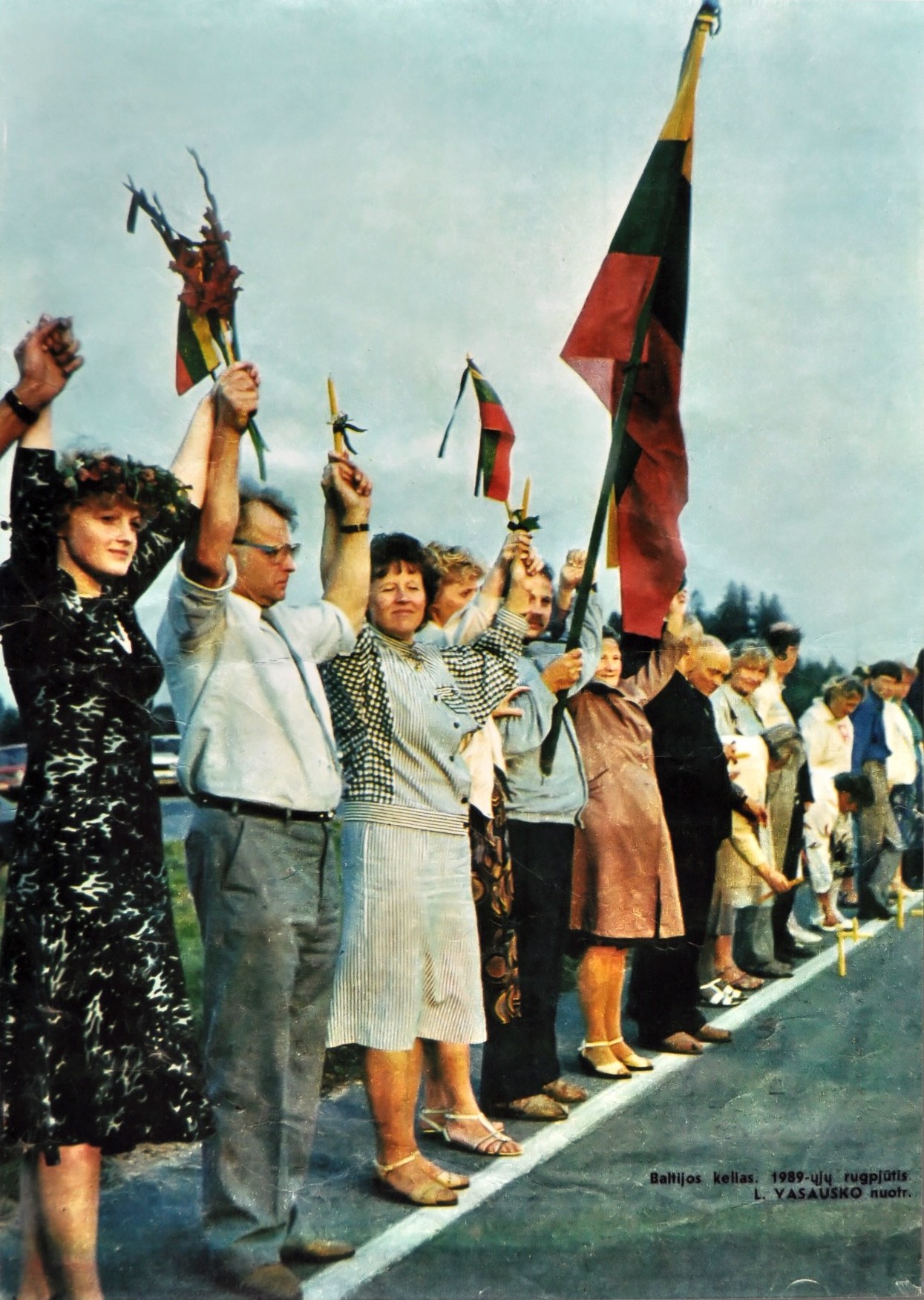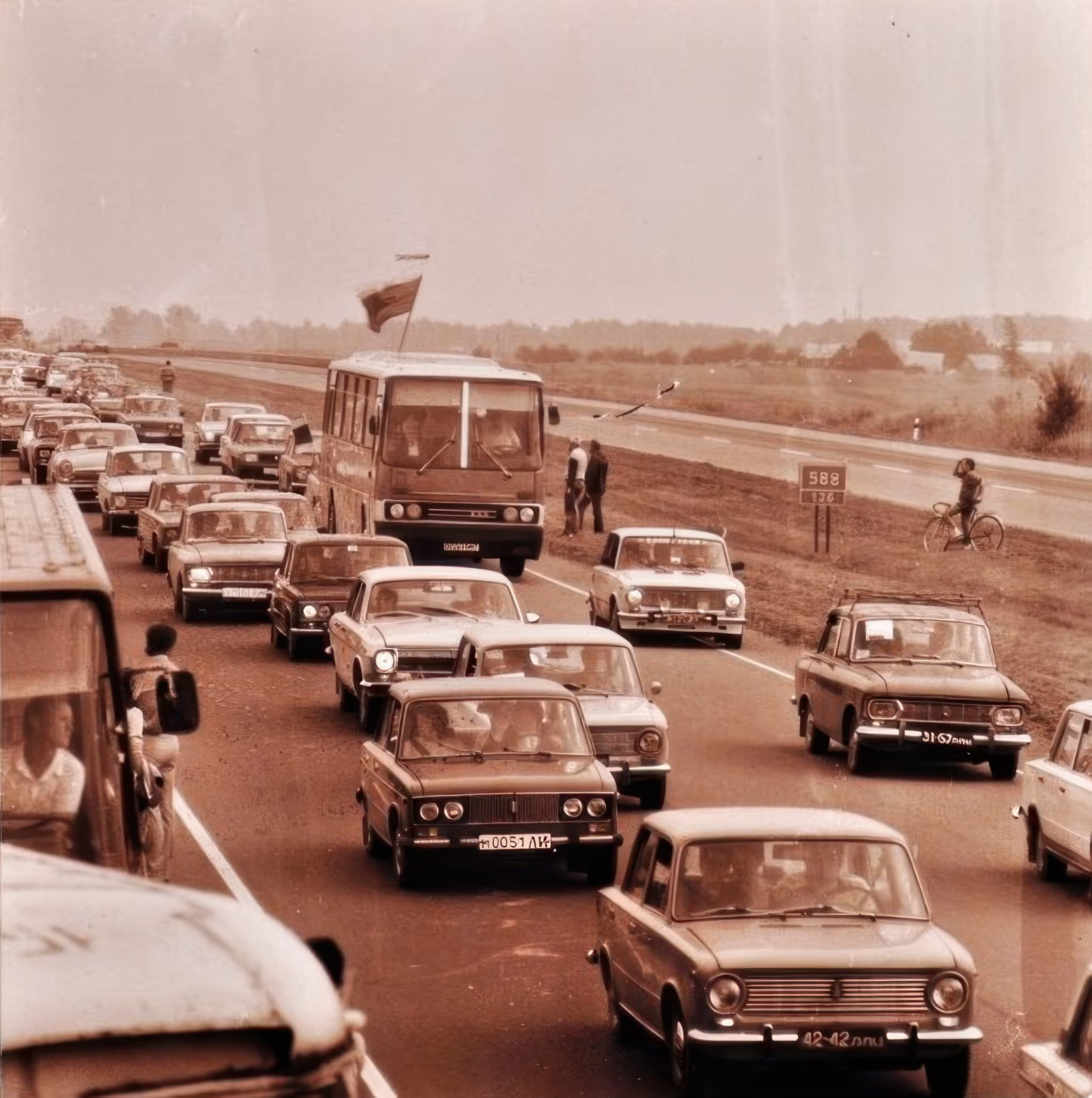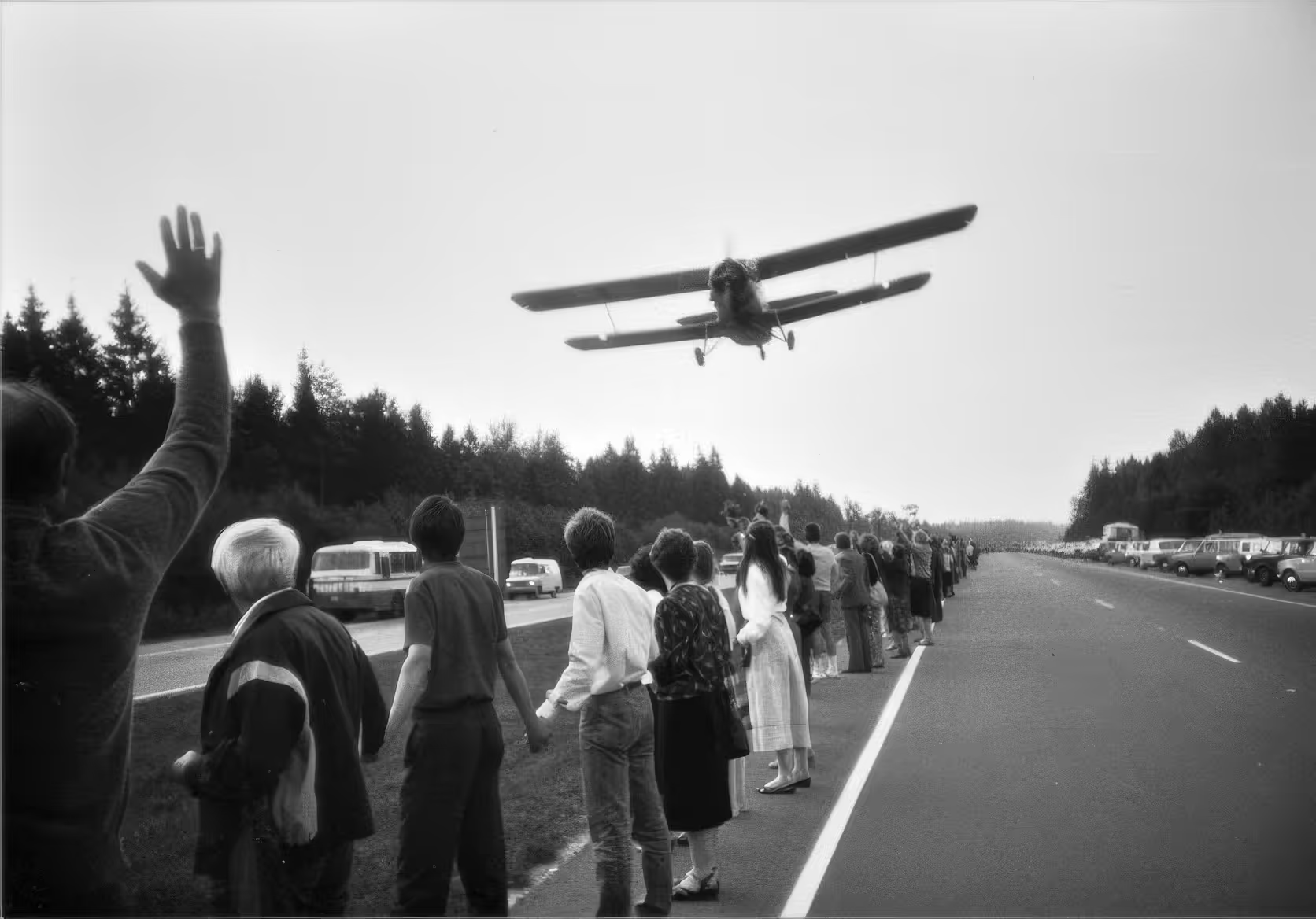As the sun set and church bells tolled, a new song rang out in three languages, uniting the crowd in a single voice. That song – “The Baltics Are Waking Up!” (Estonian: Ärgake, Baltimaad; Latvian: Atmostas Baltija; Lithuanian: Bunda jau Baltija) – was composed especially for this historic demonstration. Written by Boriss Rezņiks in 1989, it became the event’s unofficial anthem, celebrating Baltic unity in the face of Soviet rule. To this day, many consider the stirring tri-national melody a “joint anthem” of the Baltics, symbolizing how three small nations stood up together for freedom.
One Song, Three Nations – A Hymn of Unity
Writing a song in three different languages was a bold choice, and it carried powerful symbolism. Each of the three Baltic states contributed a verse in their own tongue – one in Estonian, one in Latvian, one in Lithuanian – performed by a popular singer from that nation. Žilvinas Bubelis of Lithuania, Viktors Zemgals of Latvia, and Tarmo Pihlap of Estonia lent their voices to the trilingual recording. The lyrics cast the Baltics as “three sisters” by the sea awakening from a long slumber – a poetic allegory for the three nations shaking off decades of oppression. In each language, the song’s refrain calls out “Lithuania, Latvia, Estonia!” by name, affirming that all three sisters stand together. This was a deliberate message of solidarity: though Estonians speak a Finno-Ugric language and Latvians and Lithuanians speak Baltic languages, the dream of independence was one and the same. Rezņiks – a Latvian composer active in the singing culture – crafted the piece to inspire a shared patriotic fervor across linguistic divides. “The Baltics Are Waking Up!” thus became more than just a song; it was a musical manifesto of unity.
At the time, Estonia, Latvia, and Lithuania were still Soviet-occupied republics, but a national awakening was in full swing. Mass singing had already become a form of peaceful resistance (the broader Singing Revolution), with huge song festivals and open-air concerts fueling patriotism. Still, a tri-national anthem was unprecedented. By giving each country’s language an equal presence, the song reinforced the idea that none of the Baltic states stood alone in their struggle – “no land is alone,” as a popular Estonian song of the era proclaimed. The very title “The Baltics Are Waking Up!” captured the moment’s spirit: after decades of enforced slumber under Soviet rule, all three nations were rising, side by side, to reclaim their destiny.

The Baltic Way – When a Song Linked Hands Across 675 km
On that fateful day – August 23, 1989, the 50th anniversary of the Molotov–Ribbentrop Pact – the Baltic Way demonstration showcased the power of unity to the world. At 7 p.m., people across the Baltics clasped hands for 15 minutes, forming an unbroken chain that connected symbolic national landmarks: from the Tall Hermann Tower on Toompea Hill in Tallinn, past Riga’s Freedom Monument, all the way to the base of Gediminas Tower in Vilnius. Many stood with their faces turned westward – a quiet declaration that their future lay with free Europe, not the Soviet east. In these electric moments, “The Baltics Are Waking Up!” could be heard echoing over radios and among the crowds, providing a musical heartbeat to the human chain. Organizers had coordinated the massive rally largely via radio broadcasts, so it was only fitting that a song would bind the participants emotionally as firmly as their joined hands did physically. “Boriss Rezņiks’ audio piece was and remains a hymn to an event which united so many different people in song and in hope for a free country,” reflected Riga’s mayor decades later. Indeed, as voices in three languages joined in the common chorus – “Wake up, Baltic countries… Lithuania, Latvia, Estonia!” – there was no doubt that the Baltic peoples saw their fates as intertwined. This musical show of solidarity helped make the Baltic Way not only an incredible visual demonstration, but a singing revolution milestone as well.

The impact was immediate and profound. The Soviet authorities were stunned by the breadth of participation – roughly a quarter of the entire Baltic population took part – and by the emotional resonance the event generated worldwide. Western media broadcast images of the Baltic human chain and its singing crowds, making it a potent symbol of nonviolent resistance. Historian accounts note that the Baltic Way was an “emotionally captivating and visually stunning” publicity triumph for the independence movements. In the months that followed, this grassroots pressure only grew: within half a year, Lithuania declared independence, soon followed by Latvia and Estonia. The three sisters had indeed awakened and would not be put back to sleep. By August 1991 – just two years after the song was first sung – all three Baltic nations were free.

A Legacy Carried on Airwaves and Across the World
In 2019, on the 30th anniversary of the Baltic Way, over 2,000 vintage radios were assembled in Vilnius for an art installation. Titled “One Wave,” the towering sculpture broadcast the trilingual song “The Baltics Are Waking Up!” in unison – a tribute to the role of radio in uniting the 1989 protest.
In the years since 1989, “The Baltics Are Waking Up!” has retained a cherished place in Baltic history and culture. Every five or ten years on Baltic Way anniversary dates, people gather to reenact the chain and often sing the anthem that accompanied it. In 2019, Vilnius marked the event’s 30th anniversary by constructing a record-breaking installation of 2,000 old radios, all tuned to the same frequency to simultaneously play the song. This artistic homage – called “One Wave” – honored not only Rezņiks’ composition but also the medium that helped carry its message. “It appeared that the main role was played by the radio” in 1989’s mobilization, noted one organizer – hence the sea of radios crackling to life together in 2019, symbolizing unity across the airwaves. On that same day in 2019, thousands of protesters in Hong Kong joined hands to form their own human chain, explicitly inspired by the Baltic Way as they sang for democracy. From Catalonia to South Asia, activists have cited the Baltic Way – and sometimes even echoed its musical spirit – in their own fights for freedom. Human chains in places as far afield as Barcelona (2013) and Bangladesh (2004) drew direct inspiration from the Baltics’ example, proving that the message of August 23, 1989 resonated far beyond the shores of the Baltic Sea.
Within the Baltics, the song’s legacy also lives on. In independent Estonia, Latvia, and Lithuania, the 23rd of August is now observed as an official remembrance day (Black Ribbon Day), and annual ceremonies often include singing the freedom songs of the late 1980s. In 2024, for instance, a Baltic Way commemoration in Washington, DC ended with participants young and old holding hands in a circle and singing “The Baltics Are Waking Up!” once more. Remarkably, the composer Boriss Rezņiks has been honored for his creation: Riga’s City Council named him “Rigan of the Year” in 2019, acknowledging that his Atmostas Baltija became a “legendary National Awakening composition” and a musical emblem of Latvia’s capital on the world stage. The Baltic Way’s documents and photos have even been added to UNESCO’s Memory of the World register, cementing its status as a world-historical event – with a song at its heart – that demonstrated how culture and song can spark political change.
Three decades on, “The Baltics Are Waking Up!” still evokes deep pride and emotion among Estonians, Latvians, and Lithuanians. Its lyrics – “Three sisters wake from sleep… come to stand for themselves” – turned out to be prophetic. What began as an anthem of hope during a 15-minute protest helped catalyze the rebirth of three nations. Today, whenever this trilingual hymn is performed at song festivals or anniversary events, audiences invariably join hands or sway together, recalling that moment in 1989 when millions literally and figuratively stood together as one. The song endures as a beautiful reminder that the Baltics, once awakened, will never let their freedom be taken away again.
-
English - Translation
The Baltics Are Waking Up!
Three sisters stand by the coast of sea
They are pressed by weakness and tiredness.
There waded land and spirits
Of honour and sense of three nations.
But in the towers of destiny belling loud
And the sea starts to wave.
Three sisters wake up from the sleep,
Come to stand for theirselves.
The Baltics is waking up, the Baltics is waking up
Lithuania, Latvia, Estonia! Lithuanian
Three sisters sleep by the sea
They are pressed by the bond, desperation
Wandering like a beggar by the sea coast
The spirit of nations' honour
But the bell of the destiny reechos again
And the sea tousles its waves
Three sisters wake from the sleep
To defend the honour of theirs.
The Baltics is waking up, the Baltics is waking up,
Lithuania, Latvia, Estonia!
Three sisters with faces of sea,
they were made sleepy by the song of waves.
Three nations fighting here for centuries
sacrified ancient honour.
When the bell rings in towers,
the sea is taken by the will of freedom.
To protect the fate and life,
three sisters wake now.
Wake up Baltic countries,
Lithuania, Latvia, Estonia!
Wake up Baltic countries,
Lithuania, Latvia, Estonia!
Wake up Baltic countries,
Lithuania, Latvia, Estonia!
Wake up Baltic countries,
Lithuania, Latvia, Estonia!













.png)
.png)
.png)
